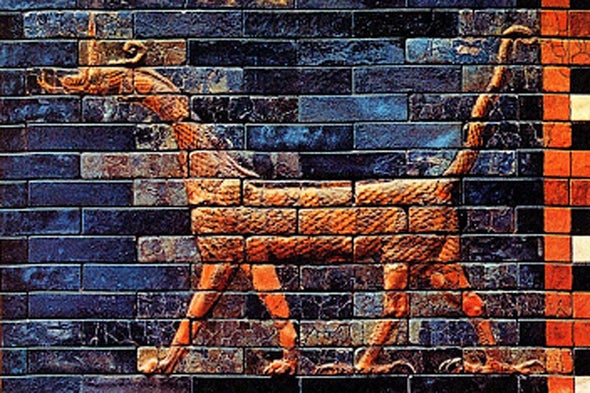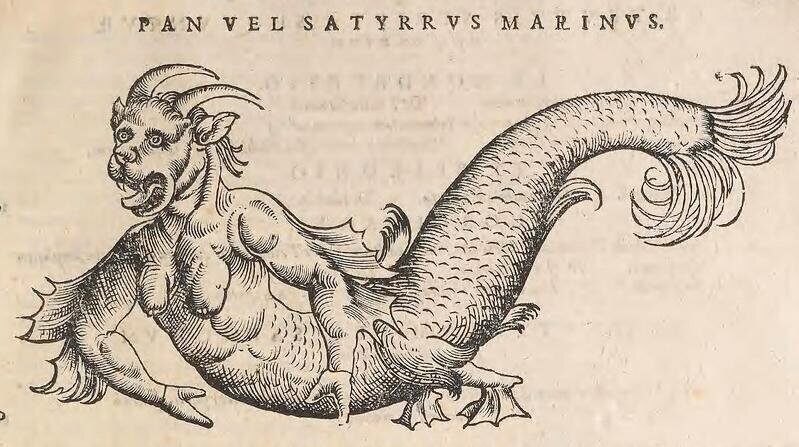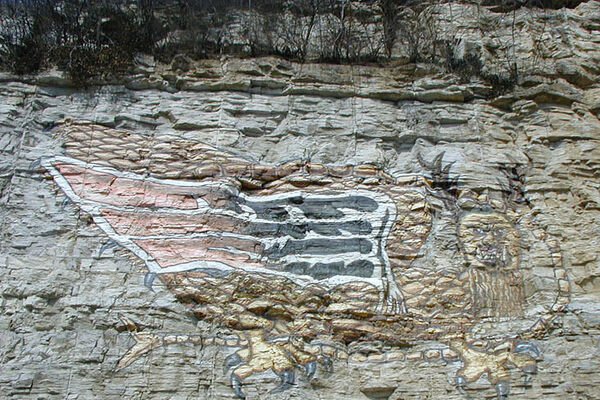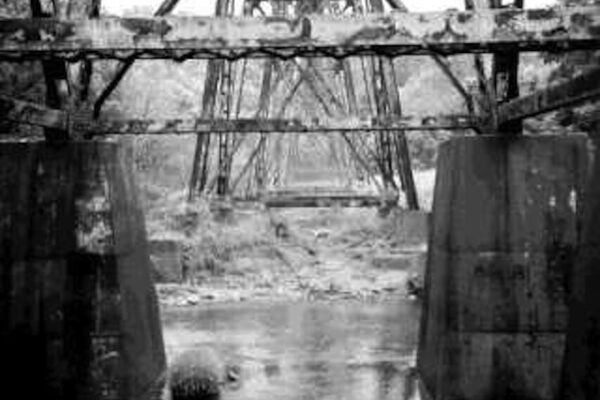North American Lake Monsters
By Nathan Ballingrud
Published 2013-13-07
Small Beer Press
300 Pages

What We Talk About When We Talk About Monsters
By John Langan SEPTEMBER 19, 2013
THERE’S SOMETHING ALMOST non-descript about the title of Nathan Ballingrud’s excellent new collection of stories, North American Lake Monsters. It’s as if we’re being presented with a field guide — albeit, an eccentric one — rather than a selection of powerful and moving horror stories. And yet, unassuming as the title is, its naturalist overtones point to one of the book’s principal influences, the broad American tradition of fiction that flows from Hemingway and Faulkner down to Raymond Carver, Larry Brown, and Daniel Woodrell. At the heart of this tradition is a meticulous portrayal of men and women attempting to meet the challenges of living in an opaque, even hostile world, their struggles frequently engendered as much by their own shortcomings as by the recalcitrance of their environment. Such a characters’ fight to resist the world, even when it is doomed to failure, has provided the engine for a wide array of American novels ranging from The Sun Also Rises (1926) to Winter’s Bone (2007).
Thematically, this genealogy also lies within hailing distance of the horror narratives of writers such as H.P. Lovecraft, whose characters also contest overwhelming forces, exterior and interior. While this convergence has received little critical attention, it has been recognized and exploited by writers in the horror field ranging from Ray Bradbury to Stephen King. Their narratives lavish as much attention on character and setting as they do on the threat to them, creating, as it were, an imaginary werewolf in a real subdivision. The result of this is twofold. At the level of narrative action, the horrific elements gain in credibility and effect. At the level of narrative resonance, the real-world trials the characters face intersect the symbolic implications of the horrific elements, creating a whole greater than the sum of its parts. Thus, in a novel such as Something Wicked This Way Comes (1962) the adolescent anxieties besetting Bradbury’s teenaged protagonists manifest in outsize fashion in the monstrous carnival that descends on Green Town, Illinois. Similarly, the protean monster that stalks the pages of It (1986) mirrors the plethora of fears that afflict King’s characters, first as children and then as adults.
What Nathan Ballingrud does in North American Lake Monsters is to reinvigorate the horror tradition in which he participates by returning to that Hemingway-Faulkner source. Though it would be glib to describe the stories in this collection as Stephen King by way of Raymond Carver, Ballingrud’s portrayal of women and men clinging to the lower rungs of the socio-economic ladder rings as true as any of Carver’s efforts, and gives his work an impressive heft.
The protagonist of the book’s opening story, the blistering “You Go Where It Takes You,” is a case in point. The single mother of a three-year-old daughter, waiting tables during the morning shift at the local diner, Toni is living a life that is gradually coming apart at the seams. Abandoned by her child’s father, pursued by a social worker questioning the child’s psychological well-being, her daily existence has become a puzzle she cannot solve. When a large but friendly customer offers to take her out, she accepts not out of any expectation of a Cinderella-style rescue from her circumstances, but because it will be something different to do, a break in the routine that is grinding her down. Yet when this man reveals a fantastic and gruesome secret to her, Toni reacts, not with fear, but with jealousy and desire, seizing the revelation as a chance for her to escape from her life. Her response, and the action it subsequently engenders, closes the story on a devastating note. This showcases one of Ballingrud’s strengths as a writer, his ability to inhabit the emotional lives of his characters in a way that feels utterly authentic.
That ability is on display throughout the rest of the stories in this book. In “Wild Acre,” a remarkable werewolf story, the beast is glimpsed only briefly during the story’s opening pages, but the psychological damage it inflicts on Jeremy, the sole survivor of its attack, poisons his life. Within the narrative, it is possible to recognize the outline of one of the more familiar werewolf stories, that of the man unwittingly infected by the monster’s curse. But Ballingrud uses that structure to frame a story about the ways in which violence warps the lives of all who encounter it. He offers no satisfying confrontation with the monster, no climactic dispatch of the beast and exorcism of its evil. The werewolf devotes no more attention to its victims than does any of the other forces arrayed against them, from an economy in recession to a social milieu in which they are not welcome. For the monster, its victims are food, worth no more attention than a lunchtime hamburger. Confronted by such circumstances, Jeremy is subject to the very real and alluring temptation to become like the beast, to embrace the violence that has granted it so much sway over his life. It is a compelling anatomy of the effects and the attractions of brutality
“Wild Acre” brings its monster onstage momentarily, and at a distance. Not all the stories in this collection, however, play as coy. The brilliant “Sunbleached” portrays a situation by now familiar to readers of vampire fiction: the disaffected youth who longs for a vampire to confer on him the gift of its condition. From Anne Rice to Stephanie Meyer, this plot has been treated in quasi-romantic terms. Ballingrud shifts the scenario to the Freudian family romance, giving us Joshua, a fifteen-year-old boy living with his mother and younger brother. Wounded by his father’s abandonment, jealous of his young mother’s boyfriend, Joshua looks to the vampire who becomes trapped under his house as a means to take control first of his own life, then of his family.. Yet the state of the vampire with whom Joshua is attempting to negotiate gives a clue that the situation is far, far worse than he realizes. Charred by a brief exposure to the rising sun, this is no handsome prince of the undead. Rather, it is sharp teeth and an appetite. We can hardly be blamed for guessing that the story will not turn out happily; when that guess is confirmed, however, it is in a scene shot through with a pathos even more devastating than the horror it accompanies.
Joshua is like many of the protagonists in Ballingrud’s stories: emotionally scarred; uncomfortable in his own skin; desperate for some kind of change, no matter good or bad. The vampire embodies one of the collection’s recurrent motifs, that of consumption. Sometimes it is the monsters who do the eating, sometimes the human characters, but the world of this book is one of hunger real and figurative, in which everyone is riven by a fundamental lack. Indeed, it may well be the manner in which a character responds to this radical insufficiency that defines him or her as monstrous or human. The monsters embrace and indulge their hungers unabashedly. The humans wrestle with their deficits, and although that struggle may lead them to terrible decisions, there is still the sense of their choices as stays against the abyss. Of course, this results in an irony that pervades the collection. But it is not a cheap irony, the knee-jerk response of the amateur cynic. Rather, it is the earned response of a writer who has watched men and women try to escape the traps of their lives by constructing bigger and more elaborate traps for themselves.
Among aficionados of horror fiction, it has become something of a commonplace to say that we are living in a new golden age of the field. Given the work of writers such as Laird Barron, Glen Hirshberg, Victor Lavalle, and Livia Llewellyn, this is not an unreasonable view to take. Certainly, the innovative and exciting fiction currently being produced in the horror field calls to mind the mid-1980s, when Clive Barker, T.E.D. Klein, Stephen King, and Peter Straub were demonstrating the potential of the horror story to serve as a vehicle for serious and sustained literary expression. Like the work of those earlier writers, that of Barron, Hirshberg, Lavalle, Llewellyn — and of Nathan Ballingrud — is built to last. Today, we might reach for a book such as Barker’s The Damnation Game (1985) or Klein’s Dark Gods (1985) as an example of work that has weathered the last few decades and promises to survive into those ahead. North American Lake Monsters is such a book.
RECOMMENDED












 Tetrapod Zoology
Tetrapod Zoology


 Cropped version of the O'Connor Loch Ness monster photo - note how the far left part of the image (normally cropped out!) looks weird for what's meant to be part of an animal's body. It's a good match for the corresponding part of an inverted kayak (
Cropped version of the O'Connor Loch Ness monster photo - note how the far left part of the image (normally cropped out!) looks weird for what's meant to be part of an animal's body. It's a good match for the corresponding part of an inverted kayak (






















































